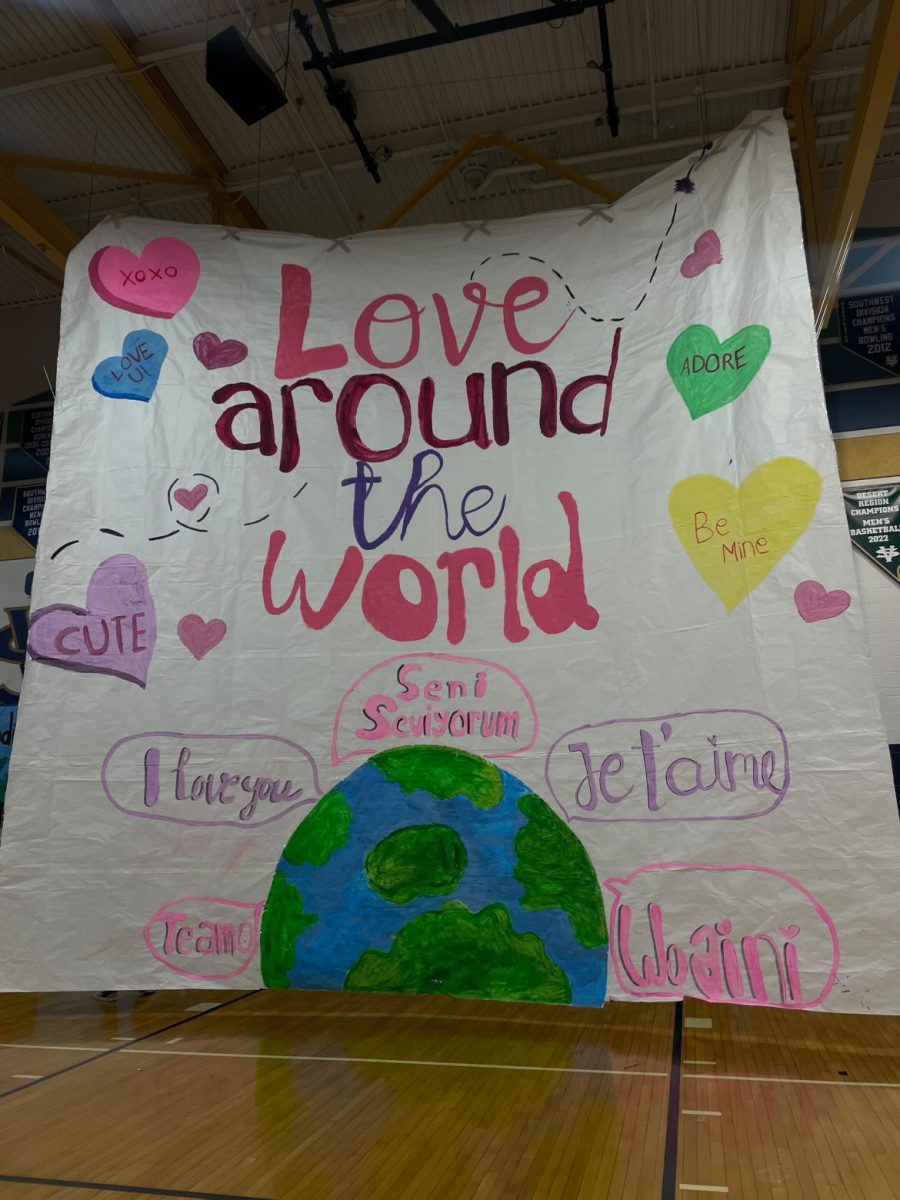When people hear the word ‘homeless’, they often think of a bum on the street with an unshaven beard, shopping cart, and cardboard sign. In fact, there are families in the Spring Valley High School community that are considered homeless and in need of help. Students need to be aware that homelessness can happen to anyone of any age, gender, religion, or race. Sometimes you can tell; sometimes you cannot. The person sitting next to you could be homeless, and you wouldn’t even know it.
In the state of Nevada, you are a considered a homeless youth if you lack “a fixed, regular, and adequate nighttime residence.” Basically, just because you have a place to sleep for the night such as someone else’s home, a motel, or your car does not mean that you’re not homeless. Many homeless teens don’t consider themselves homeless because they too think of the bum on the street and aren’t and don’t want to be like him. Some of them seek help, but others don’t.
“They’re often embarrassed or fearful,” said Marcia Weigland, program coordinator for Street Teens, an organization devoted to helping teens get off the street. She added that boys are usually “more hesitant” to ask for help than girls.
The homeless youth that do ask for help have many options available to them. Various organizations such as Street Teens, The Boys and Girls Club, and the Nevada Partnership for Homeless Youth provide services for abandoned and neglected youth in times of crisis. There are two drop-in centers for homeless youth in the Las Vegas area, which are run by the Nevada Partnership for Homeless Youth and Street Teens. Both provide a hot meal, laundry rooms, showers, clothing, bathrooms, access to counseling, and a place or transportation to a safe place to sleep.
Their efforts to alleviate homelessness have obviously been working; as the National Coalition for the Homeless Youth has stated that only 1% of the urban homeless population is consisted of teenagers. However, there is much work to be done. The same organization also stated that there are approximately 1,682,900 homeless youth in the United States. The Nevada Partnership for Homeless Youth has stated that there are 3,000 homeless youth in Las Vegas, with 300 of them sleeping on the streets.
The majority of those teens became homeless after being kicked out of their homes for a variety of reasons, but “each kid’s situation is different,” said Tim Mullin, Executive Director of the Nevada Partnership for Homeless Youth (NPHY).
Most of the homeless teens in Las Vegas are kicked out of their homes, although there are some who run away. Teens are kicked out of their homes for many different reasons. They often live in a family with a very unhealthy dynamic. ‘Paul’, a student at Spring Valley High School, anonymously shared his average day while living at home.
“I wake up around five am to go to school. Not too bad. I get home before Dad and his wife to avoid being yelled at. I spend most of my time in my room. No one bothers to talk to me even when I’m not in my room. The only time they bother to talk to me is when they tell me dinner is ready, if they even bother to tell me, or when I’ve done something ‘wrong’.” Paul was kicked out of his home many times, but is once again living with his parents. He lived with a host family at one time, and he said that he was happier there.
“It was a small apartment, but there were cats and the curfew was reasonable. The ‘house parents’ were nice and made the rules very clear,” Paul said. He added that while staying with his host family, he socialized more, was in a better mood, made more friends, and felt more confident. His enjoyed his life more while living with his host parents, but he still felt homeless and “away”.
There are many teens living in situations like Paul’s, but there is a shocking new trend of “family downsizing”, as Larry Lovelett said, the NPHY Homeless Youth Transition Specialist. Families who previously lived in comfortable, average sized homes have lost their homes and are now living in small one to two bedroom apartments. He continued saying that, “They don’t have enough room for everyone, so sometimes they kick out teens because they misbehave, don’t get along with their stepparent, or because they have younger kids to take care of.”
Most people typically stereotype homeless as coming from low-income families, but according to Lovelett, “middle and upper class families have a harder time staying together.” Many poor families are accustomed to going without, and have learned to live with it; while the economic recession has forced many formerly middle and upper class families into living without many of the amenities they are used to. Another misconception about homeless teens is that they all are drug addicts and alcoholics, while many of them are just teens trying to survive each day at a time on the streets.
“They might be on the street because of drugs or alcohol, but it’s because that’s what they’re parents did,” said Lovelett. Teens who have never lived in a healthy home environment “want to succeed,” said Lovelett, but they don’t have the tools to get themselves off the streets or off drugs without help.
According to Lovelett, teens experience three stages before they find themselves on the street. The first stage is when teenagers run away from home due to an abusive situation or crisis. Most find shelter with friends or family instead of going to a crisis center. Once the immediate crisis is over, they usually start ‘couch-surfing’. Couch surfing is when they stay with friends or family members until they kick them out or are no longer welcome there. They eventually run out of people to stay with, and they become squatters. Squatters are the people you see on the streets; they sleep in parks, flood channels, and under freeway overpasses.
Homeless teens from Spring Valley High School are experiencing different levels of homelessness, but regardless of how ‘homeless’ they are, they all need help. Through fundraisers like Community of Caring, as well as our food bank and clothing closet, Spring Valley’s goal is to provide relief for families that have fallen on bad times. Principal Gerye strongly encourages students and staff to contribute money, food, clothing, or anything they have to give to help our families in need at any time throughout the school year.
“Helping families in need is everyone’s business,” said Principal Gerye. However, it is very important to treat them with respect no matter what their financial situation is, such as in situations such as Sarah’s.
‘Sarah’, another homeless student from Spring Valley High School, said that she wishes her classmates stopped bombarding her with questions regarding where she lives as well as other peculiar things that point to her being homeless. Despite your desire to help, remember that you need to respect their privacy as well.
In addition to helping homeless youth in the ways mentioned above, one of the main things you can do is raise awareness. Interviews with Weigland, Mullin, and Lovelett reiterated the need to raise awareness, and you can help by just volunteering, donating time, and discussing this issue with family and friends.
To find out more information, call the Nevada Partnership for Homeless Youth at (702) 383-1332. If you are in need of help, please call their hotline at (866) 827-3723.







